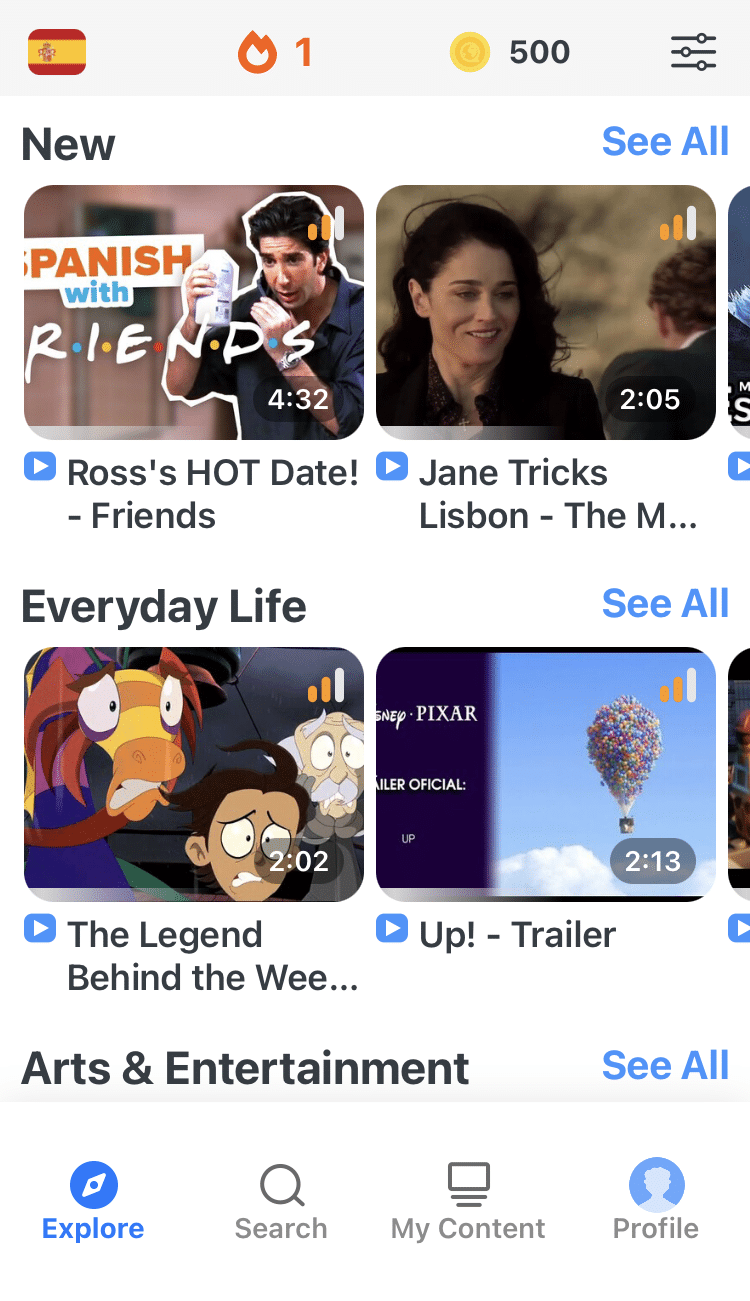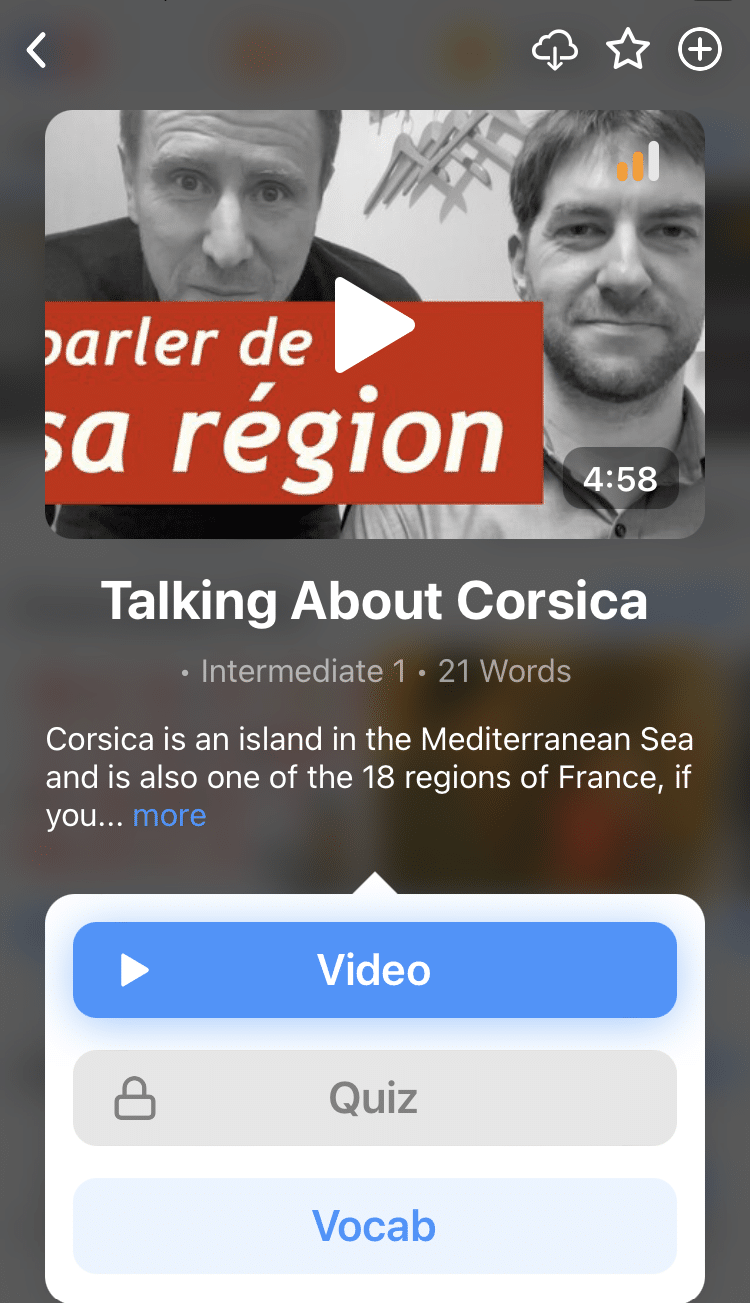
11 Strategies to Improve Your Listening Skills in a Foreign Language
Listening is an important, useful language skill that often helps make our everyday life more satisfying.
Yet, in our native language, we receive no training in it. So, how in the world can you get better at listening in a second language?
Thankfully, there’s nothing all that complicated.
With these 11 tips for how to improve listening comprehension in a foreign language, you’ll be well on your way to smoother conversations and wowing your foreign friends at karaoke.
Contents
- How to Improve Listening Skills in a Foreign Language
- 1. Know What You’re Listening For
- 2. Set Language Listening Goals
- 3. Practice Active Listening
- 4. Use Passive Listening
- 5. Do Plenty of Extensive Listening
- 6. Utilize Different Audio Pacing
- 7. Use Visuals for Extra Impact
- 8. Combine Listening and Reading
- 9. Practice Speaking
- 10. Include Listening Repetition
- 11. Practice Listening Regularly
- And One More Thing...
Download: This blog post is available as a convenient and portable PDF that you can take anywhere. Click here to get a copy. (Download)
How to Improve Listening Skills in a Foreign Language
1. Know What You’re Listening For
One of the biggest hurdles to improving foreign language listening skills can be our own perceptions.
For example, one of the most damaging perceptions is the idea that you have to understand everything you hear.
Most likely, you won’t—and that’s okay!
Learn to listen for the big picture instead of getting hung up on individual words you don’t understand.
The “big picture” might be:
- Specific sounds. As a beginner, you can practice listening purely for sound to get used to the melody of the language and its syllables, pauses and rhythms. For instance, listen for every word that starts with “p.”
- Spoken idiosyncrasies. Try to catch how the language changes when it’s spoken, and how sounds are inserted or deleted. For example, in English, “What are you going to do?” becomes more like “Whaddya gonna do?”
- The main idea. Whether it’s a conversation with a friend or a television drama, understanding the general idea of whatever you’re listening to counts as a big success.
So the key here is to figure out exactly what you’re listening for before you begin your listening practice.
Knowing what you want to hear will help you manage your expectations and see your progress.
2. Set Language Listening Goals
Goals will help ensure that you make progress, and you’ll feel more confident in your listening abilities when you accomplish them.
You can set big goals—such as understanding a whole conversation or learning an entire song—but you really want to focus on small, easily attainable goals.
For example, give yourself a point every time you those words that start with “p.” Or, aim to learn five new words each time you listen to something. At more advanced levels, listen for expressions you haven’t heard, or complex grammar structures.
Setting attainable goals is only possible if your listening materials are comprehensible, which means you should be choosing them carefully.
Choose audio that’s a slight step up from your current level. It should be stimulating enough for you to learn new things, but not so hard that you end up confused, dejected or frustrated.
You might set goals to work your way through:
- Kids’ materials. These contain common, simple language and usually have lots of visuals.
- Documentaries. The speakers often speak slowly and clearly while describing what’s happening in the footage.
- Talks and interviews. These can be found on almost any subject and usually involve just two people or a small group.
- Television shows. TV is engaging and comes in nice manageable segments, often with a “formula” that you can follow.
- Movies. Packed with culture, conversations and context, movies are often great representations of real-world speech.
3. Practice Active Listening
One of the most important ways to improve language listening skills is by practicing active listening.
That means you need to give your full attention to the audio material that you’re using to study. No cleaning your room. No doodling in your notebook. Just focus.
For instance, if you’re going to watch a TV drama, you should be actively trying to figure out what’s happening through the characters’ speech.
A good technique is to listen first, then write down five questions about things you didn’t understand. Then, listen again while trying to answer your own questions.
To really push your active listening skills, try writing a summary midway through whatever you’re listening to, and then again at the end of it.
The easiest way to set yourself up for active listening practice is with an immersive language environment, either by traveling to a place where your target language is spoken or creating immersion on your own.
But no matter the place or context, focusing your attention on the task at hand will help you get much, much more out of it.
4. Use Passive Listening
You should definitely prioritize active listening, but that doesn’t mean you can’t throw in some passive listening here and there.
While passive listening isn’t nearly as effective for adults as it is for children, it can still be beneficial.
Before you start reading, you want to have some basic familiarity with the alphabet; listening is no different.
Research has shown that listening to speech in a new language trains your brain to recognize the sounds and combinations of sounds that language is built from, even if you don’t understand the actual content.
Once you’ve internalized the sounds, it becomes easier to learn words and build up your listening comprehension.
Passive listening is something you can do right from the get-go, too. And it can be fun!
Put on some background music in your target language, for example. Listen to your favorite songs repeatedly, and you may even get some words stuck in your head.
Of course, the ultimate passive language learning technique is sleep learning.
Obviously, you’re not going to make leaps and bounds in your listening skills by sleeping. But you may find that if you review some vocab words and play them back while you’re asleep, you could actually learn them better.
5. Do Plenty of Extensive Listening
There are two key principles to instituting an effective extensive listening plan. Your audio sources should be enjoyable, and as diverse as possible.
You can try listening to:
- Podcasts. Try language learning programs or shows about topics you enjoy.
- News. Watch newscasts for visual context, or really test your listening skills by using only audio.
- Audiobooks. Start by listening to books you’re already familiar with or ones that cover topics you know well.
- TV shows. Check out popular programs in your target language, or try a dubbed favorite.
- Movies. Try very short segments first to ease yourself into foreign language movie watching.
- Music. Pick out new words and grammar that seem useful as you memorize the lyrics.
A wide variety of enjoyable audio sources will help you learn new vocabulary and idiomatic expressions. Find a few each time you watch or listen to something, look them up in the dictionary and then try to find them in other contexts.
Extensive listening has a host of benefits, too, like improving how quickly you comprehend spoken words and fine-tuning your understanding of pronunciation.
Plus, a large collection of listening materials means there’s something to fit in every time gap, so you can squeeze your language listening practice in whenever you’ve got some spare moments!
6. Utilize Different Audio Pacing
Unlike reading, you usually can’t practice listening at your own pace.
Of course, your language partner or tutor will hopefully slow down when they talk to you, but everyone else will likely talk at whatever their normal speed is.
This can be a substantial hurdle, but I have two suggestions for you.
First, find “slow listening” materials. This is one of the best ways to bridge the gap between the beginner and intermediate listening levels.
Many language teachers and programs offer content in slow-spoken language directed specifically at learners. You might try Linguistica 360’s “News in Slow” podcast series, for example.
Often, such programs include quizzes and other supplemental materials to test and reinforce your listening.
My second suggestion is to simply slow down audio on your own. Listen to podcasts or videos on programs that allow you to change the playback speed. You can usually adjust to 0.8x or 0.5x the regular speed.
You can even download audio files and use a program like Audacity to slow them down manually.
You can take the speed down as low as you need to so that you understand what’s being said. Then, gradually adjust the speed until it’s back to normal and you can follow it.
7. Use Visuals for Extra Impact
The proliferation of movie festivals and streaming services means that it’s easier than ever to access foreign films. That’s great news, because they’re an irreplaceable language learning tool.
The visual nature of film serves to support listening comprehension and the ability to recall vocab learned during the movie.
In other words: You learn more by watching a movie than just listening to audio.
If there are no subtitles, try to find a transcript of the film you choose for your language learning. That way you can look up vocabulary you don’t know, or double-check what you think you heard.
Sites like Memrise allow you to upload images for each vocab flashcard you make, so it’s easy to incorporate relevant video screenshots into your study program.
Of course, a full film in a foreign language likely seems intense. You can (and should!) break your movie-viewing into sessions, or get an app that does that for you, like FluentU.
FluentU takes authentic videos—like music videos, movie trailers, news and inspiring talks—and turns them into personalized language learning lessons.
You can try FluentU for free for 2 weeks. Check out the website or download the iOS app or Android app.
P.S. Click here to take advantage of our current sale! (Expires at the end of this month.)
8. Combine Listening and Reading
Of course it helps to read transcripts and subtitles. But at least one study has found that reading can actually be more effective for improving listening skills than listening itself!
If you’re a beginner, you’re obviously going to need lots of listening practice to get those new sounds and intonations down, but remember that the four language skills should not be studied in isolation.
Reading, especially extensive reading, is imbued with so many benefits (like increased vocabulary) that it would be criminal to ignore practice with printed texts, even if your goal is to have and understand verbal conversations.
The more closely you’re able to tie listening and reading together, the more both will improve.
For example, find a clip that has both audio and captioning in your target language. First, turn off the captions and listen. The second time, mute the audio and read. Repeat this several times, looking and listening for new details each time.
By syncing up your reading and listening practices, you’ll find that you read faster and have an easier time listening to spoken language.
9. Practice Speaking
Like reading, “cross-training” between listening and speaking will make you a more fluent speaker as well as a more effective listener.
A great technique for this is shadowing, or mimicking what you hear. It helps you better understand sounds and sound combinations, and improve pronunciation.
To practice shadowing, repeat the audio just after you hear it, doing your best to match the speaker’s pronunciation. You can also pause the audio before you repeat the words aloud.
Even better, record yourself speaking and compare it with the content you’re listening to—sometimes the sounds we think are coming out of our mouths and the sounds actually coming out of our mouths aren’t always the same!
Ideally, you should practice speaking and listening with a native speaker of your target language. A good language exchange partner or tutor will slow down their speech and try to use words suitable for your level. Plus, they can correct your pronunciation and repeat things as needed.
You can also practice speaking with your inner voice. You know that voice in your head that provides a running commentary of your life, all day long? Don’t forget to use that in the language you’re learning, too!
10. Include Listening Repetition
Repetition is essential to learning a new language.
One of the best ways to incorporate repetition into your language listening toolbox is to “re-listen.” That is, repeatedly listen to a short audio or video clip all the way through without pause, trying to catch more details during each successive listen.
You can practice “re-listening” by following these steps:
- Pick audio content short enough to listen through repeatedly, but hefty enough that you’ll need multiple listens.
- Play it through once and write down everything you understand, either as you listen or once you’re done.
- Listen again, filling in any new details you pick out.
- Repeat until you aren’t getting anything new.
- At that point, look up words you still don’t understand that jump out at you, or use subtitles if available.
Listening to the same audio repeatedly helps you work on listening for the big picture. Start with the main ideas, then work your way down to the details. Use context to draw on your pre-existing knowledge of the big picture, too.
This foreign language listening practice lets you pick apart an audio excerpt in depth without becoming dependent on the pause button—which you definitely won’t have in real conversations!
Of course, “re-listening” is best done in moderation. There is a limit on how many times you can re-listen to audio clips in one day without sacrificing a bit of your sanity.
Another repetition practice is to return to old audio materials and listen to them again. How much can you understand now that time has passed? Is it any easier? Likely, this will also be a confidence boost and show you just how much you’ve improved.
11. Practice Listening Regularly
Like anything worthwhile in life, there’s no quick fix. To improve listening comprehension in a foreign language, you have to put in the time. It requires repeated exposure.
In my experience, language learning follows a simple equation: Interest + Motivation + Effort = Success!
Proceed in small but regular bite-sized chunks. This is the most effective way of warding off boredom and keeping motivated. Use resources you enjoy and find interesting, remove distractions and focus on active listening.
Doing 15 minutes of listening practice every day is a hundred times better than a four-hour cram session every two weeks. For me, 45 minutes is the limit before my concentration starts lagging anyway.
It also helps to keep in mind that we all have good and bad days. And after the beginner stage, you’re likely to hit at least one plateau where it feels impossible to make progress.
But even a quick five minutes a day will help connect your brain to the sounds of your new language! Plan some short language listening practice into each day, and then make sure you do it.
Consistent practice means you will get better.
A little tinkering here and there to learn how to improve listening skills in a foreign language, and you’ll have nothing to fear when it comes to language listening.
Download: This blog post is available as a convenient and portable PDF that you can take anywhere. Click here to get a copy. (Download)
And One More Thing...
If you dig the idea of learning on your own time from the comfort of your smart device with real-life authentic language content, you'll love using FluentU.
With FluentU, you'll learn real languages—as they're spoken by native speakers. FluentU has a wide variety of videos as you can see here:
FluentU has interactive captions that let you tap on any word to see an image, definition, audio and useful examples. Now native language content is within reach with interactive transcripts.
Didn't catch something? Go back and listen again. Missed a word? Hover your mouse over the subtitles to instantly view definitions.
You can learn all the vocabulary in any video with FluentU's "learn mode." Swipe left or right to see more examples for the word you’re learning.
And FluentU always keeps track of vocabulary that you’re learning. It gives you extra practice with difficult words—and reminds you when it’s time to review what you’ve learned. You get a truly personalized experience.
Start using the FluentU website on your computer or tablet or, better yet, download the FluentU app from the iTunes or Google Play store. Click here to take advantage of our current sale! (Expires at the end of this month.)






